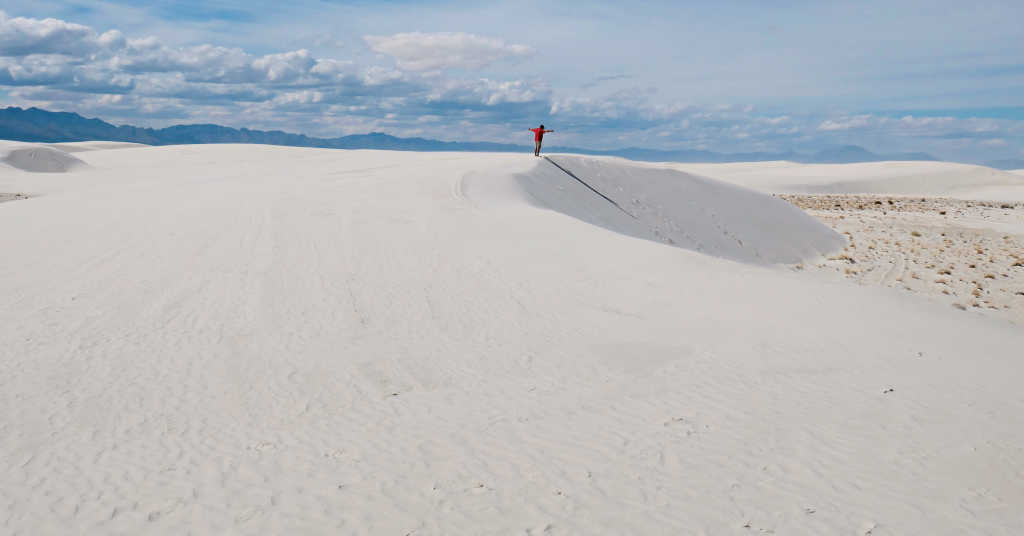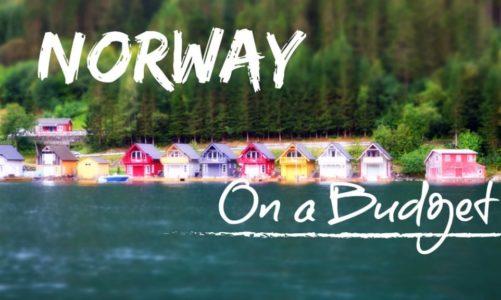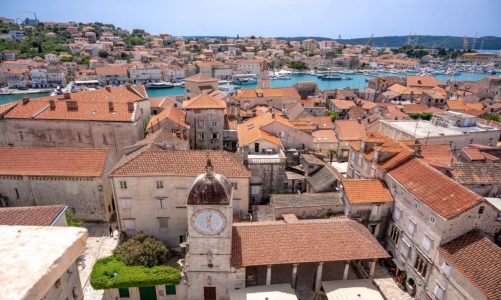White Sands National Park could easily be considered the most remarkable terrain within the US National Park Service. While it might seem exaggerated, this statement holds true without any embellishment. The park’s surreal beauty is so astonishing that you might question whether you’re truly within the borders of the United States.
In this American version of the Sahara, sleds now replace camels as the preferred mode of transportation. It’s a stark contrast from the era when Spanish explorers labeled this region of southern New Mexico as “The journey of death.”
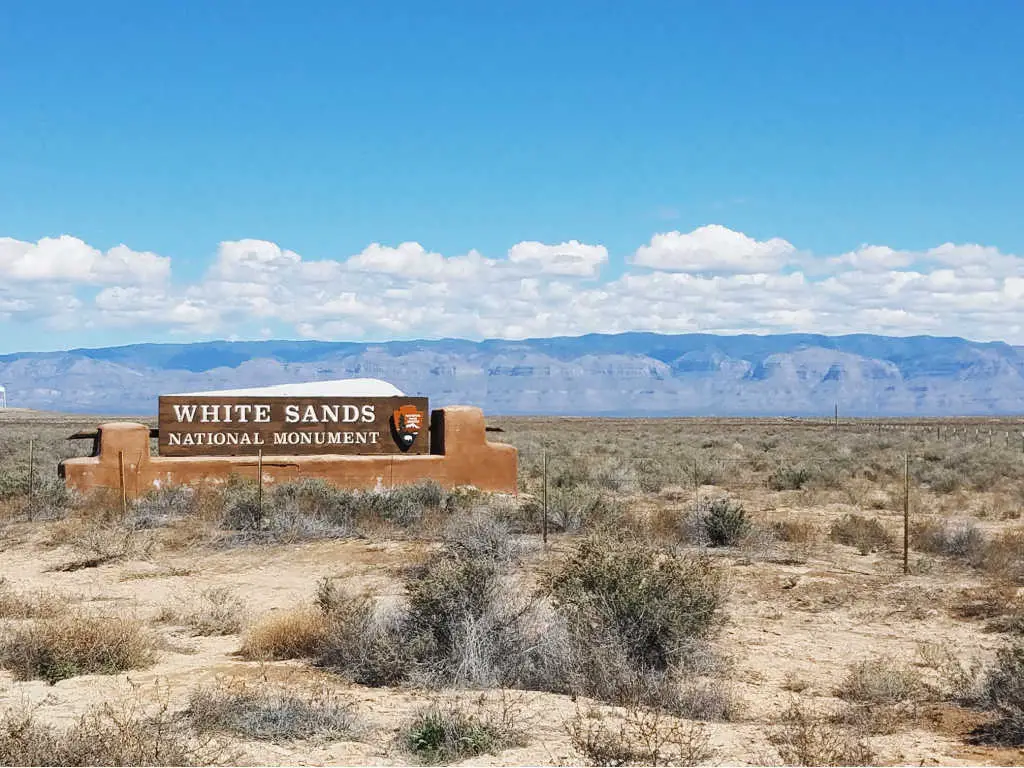
WHITE SANDS NATIONAL PARK – 7 THINGS TO KNOW
1. It’s the Largest Gypsum Dunefield on Earth
2. It Shares Land With the White Sands Missile Range
3. Visitors Are Encouraged To Bring Sleds
4. You Must Try One of These Activities
5. It’s One of the Best Places For Photography in the US
6. There’s a Section of the Park Along Route 70
7. Items You Must Bring to White Sands National Park
The dunes in White Sands National Park are exceptionally beautiful. They’re virtually snow-white and comprised of nearly pure gypsum.
After a relaxing night at the charming Hotel Encanto de Las Cruces, we set off for a day trip to White Sands National Park. The hotel’s comfortable amenities, including a nice pool, set us up well for our adventure. With the park conveniently located nearby, it made for a great starting point. The hotel’s relaxed Southwest-style atmosphere added to the overall experience without any fuss.
🌴🏨 Hotel Encanto de Las Cruces > Check Availability
7 Things To Know Before Visiting White Sands National Park
Upon first sight, most visitors wonder how this land enchantment was all formed. The wonderful ripples and monumental dunes have all been shaped by a southwesterly wind over thousands of years.
Below are seven things to know before visiting the White Sands National Park.
1. It’s the Largest Gypsum Dunefield on Earth
Positioned in the Tularosa Basin, White Sands National Park is one of the world’s greatest natural wonders. Taking up about the same amount of space as New York City, this massive dune field offers 275 square miles of shockingly beautiful desert.
Budget Tip: Don’t forget to take the nearby PistachioLand Farm Tour!
Look no further than the white stripes near the tops of the surrounding mountain ranges to see where the gypsum came from. To make a long story short, about 250 million years ago, long before the dinosaur world, the gypsum was deposited on the floor of a shallow sea when North America began breaking apart from Pangea.
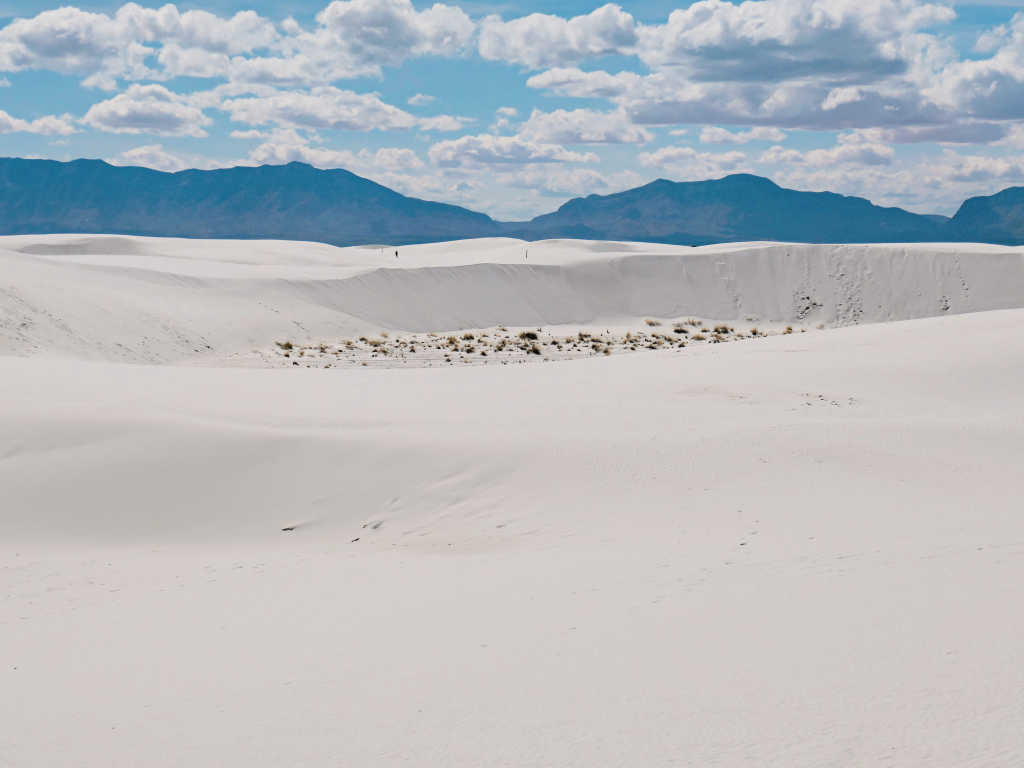
Budget Tip: We stayed at the impressive Hotel Encanto in Las Cruces— it had the most epic pool!
How Were the Dunes Formed?
As the separation began, the land in the area detached and rose. This eventually created the Sacrament and San Andres mountain ranges. The land in between the mountains collapsed, forming the Tularosa Basin. About 12,000 years ago there was a significant amount of snow and rain in the area and a lake formed. We now refer to it as Lake Otero.
The precipitation drained the gypsum from the mountains into Lake Otero. Over time, the lake slowly evaporated. This allowed the gypsum to crystallize into selenite. Winds as strong as 60 mph eventually broke up the large chunks of crystal into small grains of sand.
Eventually, the particles were made so small that they turned into dust and swept into the air, forming the dunes. A small section of the lake remains in the southwest section of the park. It is called Lake Lucero and it is here where the new dunes are created.
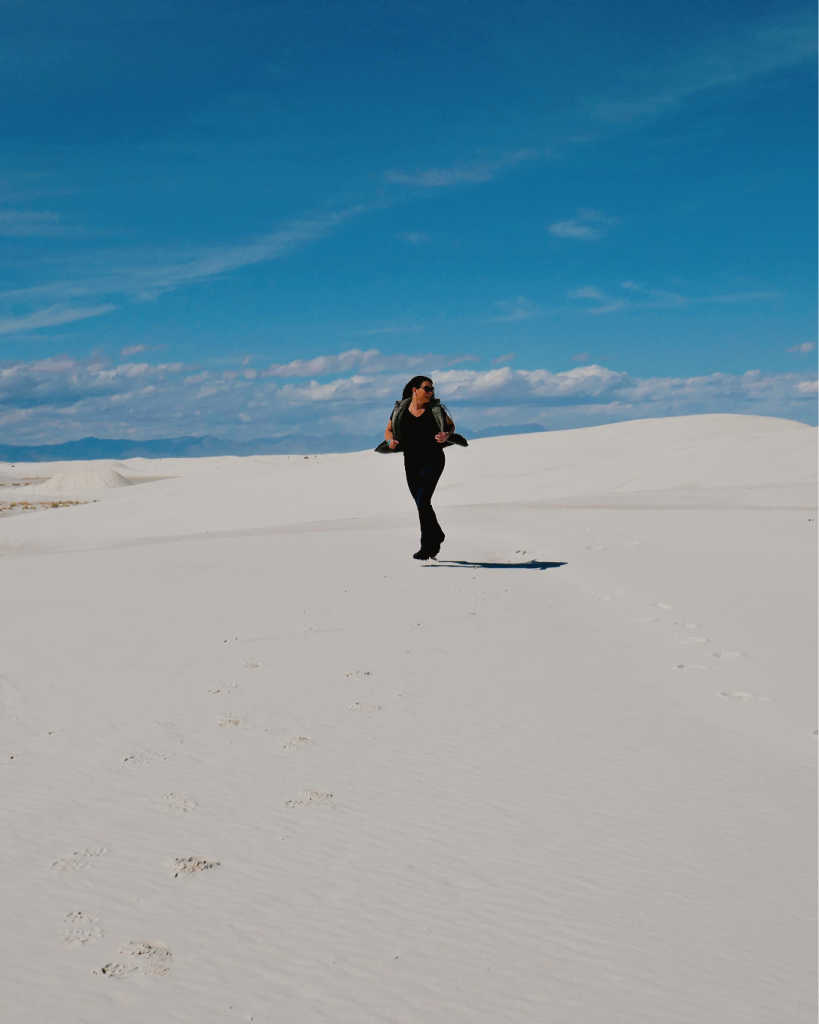
8 Fun Facts About White Sands National Park
- Gypsum or calcium sulfate, as chemists refer to it, is an incredibly useful mineral. It’s used to make some types of toothpaste, plaster to strengthen surgical casts, food additives, conditioner for hair, and fertilizer.
- Before Hollywood utilized CGI, filmmakers used gypsum to create fake snow.
- Egyptians worked with gypsum and used it as a form of plaster inside their tombs, pyramids, and palaces.
- Ancient Greeks applied gypsum to the framing of windows to create a moonlight effect in their temples. As a result, the type of gypsum they used was referred to as selenite, after the moon goddess Selene.
- In 2014, White Sands National Park was designated as a megatracksite. In short, the park contains the most significant collection of ice-age fossilized animal prints worldwide, including humans, American lions, dire wolves, giant ground sloths, and mammoths.
- Many species of animals evolved into the color white to match the dunes.
- “The Mule,” “Transformers,” “Year One,” “Astronaut Farmer,” “Men Who Stare at Goats,” and Boyz II Men’s “Water Runs Dry” music video were all filmed here.
- When the park first opened, visitors were allowed to use their cars to drive over the dunes!
2. It Shares Land With the White Sands Missile Range
Known as the “Birthplace of America’s Missile and Space Activity,” White Sands National Park is surrounded by the White Sands Missile Range (WSMR). During the Manhattan Project, the first atomic bomb was tested here, on the Trinity site.
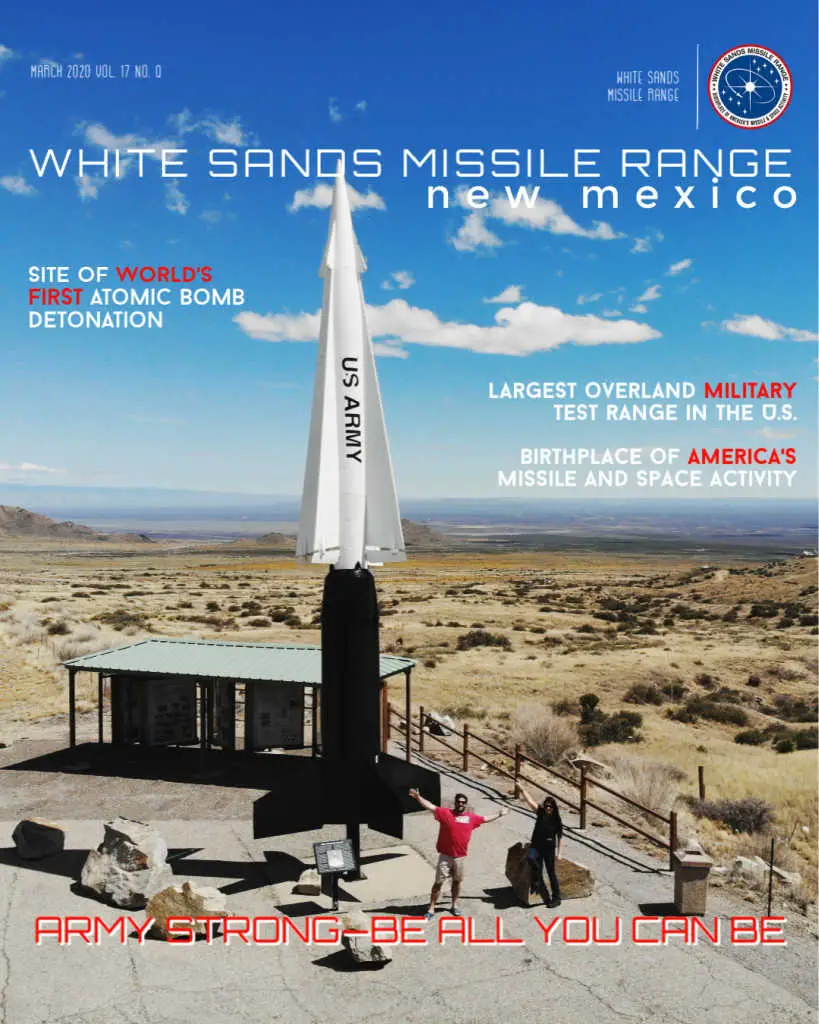
Occasionally, the largest overland test range in the US performs missile tests that will close Highway 70. This is the main road leading to the entrance of the park. When the testing is significant, the Dunes Drive may be closed. When this occurs, visitors are asked to remain at the visitor center.
The testing usually takes place in the early morning hours. Road closures will be enforced over the San Augustin Pass (US 70 from Las Cruces), US 54, and US 380. The best place to check for road closures is the WSMR Twitter page.
3. Visitors Are Encouraged To Bring Sleds
Delightful to touch, and walk on for that matter, the sands of the park are cool to the touch, even in the hottest sun. As a result, the sand is perfect for walking barefoot on, but more especially, sledding. This exciting activity is enjoyed by both children and adults.
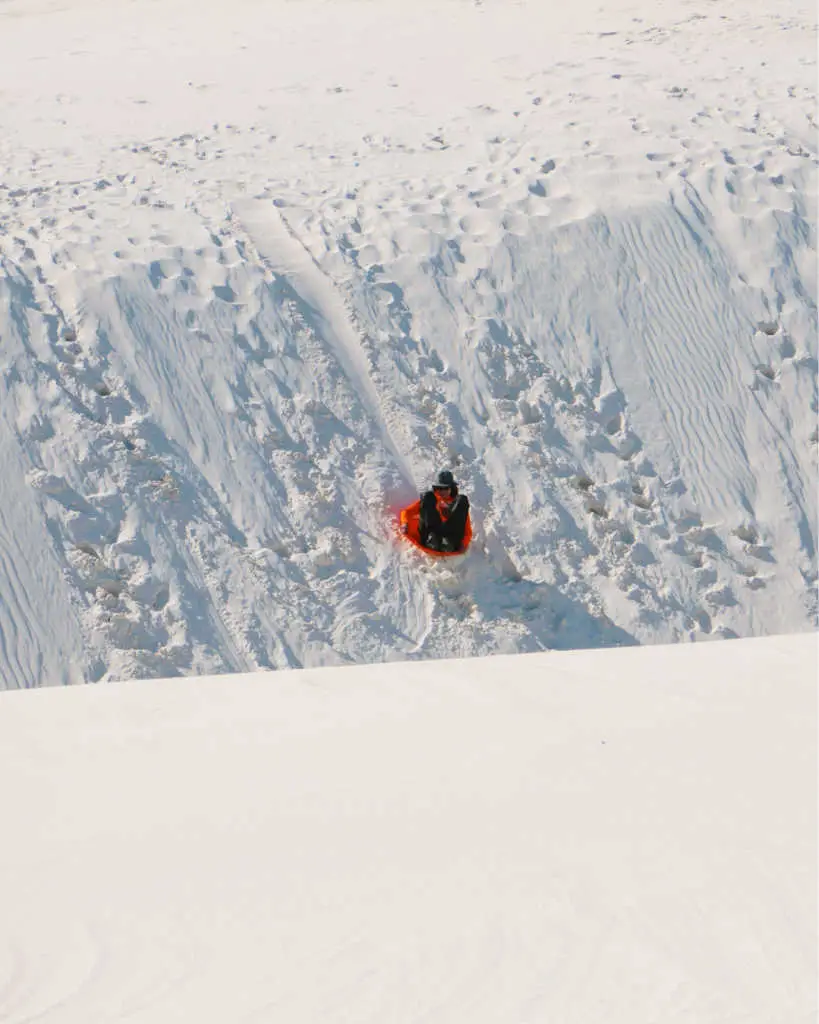
Similar to sledding in the snow, sliding down dunes is just as adventurous—but a bit different. This is an ideal opportunity to break out your winter snow disc saucer (make sure it works in sand) in the middle of the summer. They’re even available for purchase at the gift shop if you forgot to bring one. Generally, snow discs with holes near the handles will encourage the disc to become filled with sand.
Tips For Sledding at White Sands National Park
- Select a safe place away from plants or the road.
- Single out one section of the dune for going up and down. This will pack the sand, making it easier for each roundtrip.
- The more you lean back, the faster you’ll go.
- Adding wax to the sled will make it go faster.
- The best time for sledding is just after a rain when the sand is packed the hardest.
4. You Must Try One of These Activities
Beyond sledding, the park offers a full array of activities. These include the scenic Dunes Drive, a guided tour of Lake Otero led by a park ranger, photography, picnicking, hiking, bicycling, and camping. Temperatures vary dramatically depending on the time of year of your visit. Therefore, the desired activity will most likely be dictated by the weather.

For example, daytime highs in the summer reach or exceed 100ºF, while in the winter they’re about 80ºF. Accordingly, high-impact activities may be more enjoyable in the cooler months and low impact in the warmer. However, if you come well prepared you probably can get away enjoying any activity at any time of year.
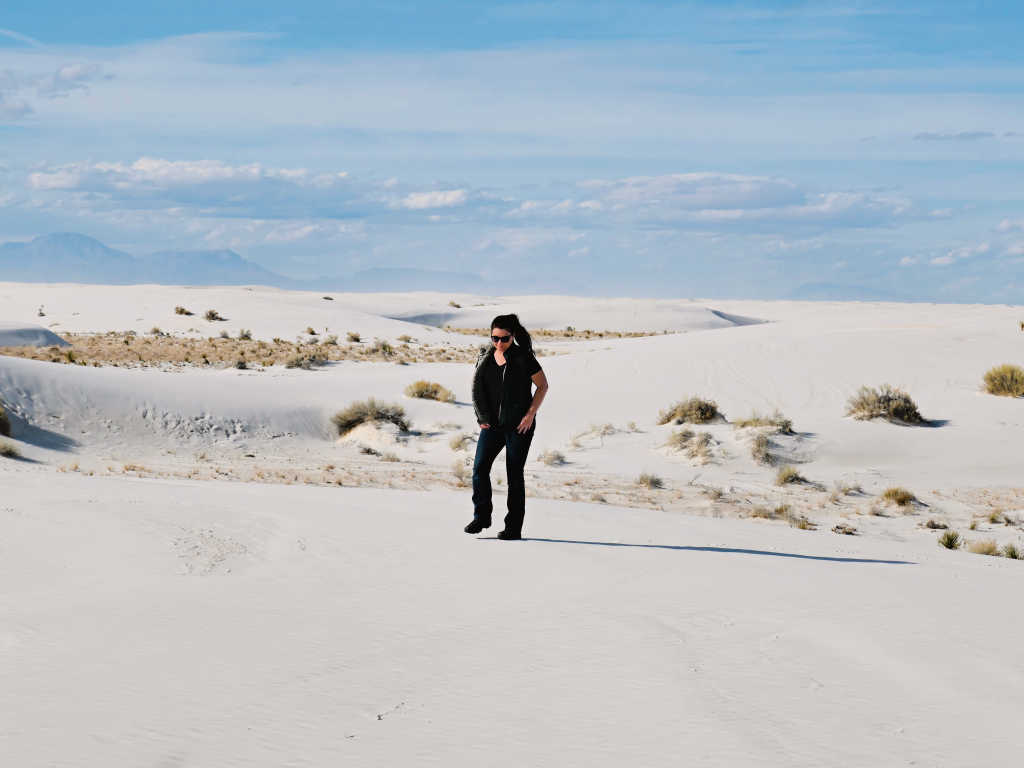
Our Favorite Activities
Beyond simply taking the 16-mile scenic Dunes Drive, which is amazing, our favorite three activities to participate in at White Sands are picnicking, photography, and hiking. There are 62 shaded picnic tables with wind blockers and grills. Consider bringing some charcoal and lighter fluid for a proper outdoor picnic.
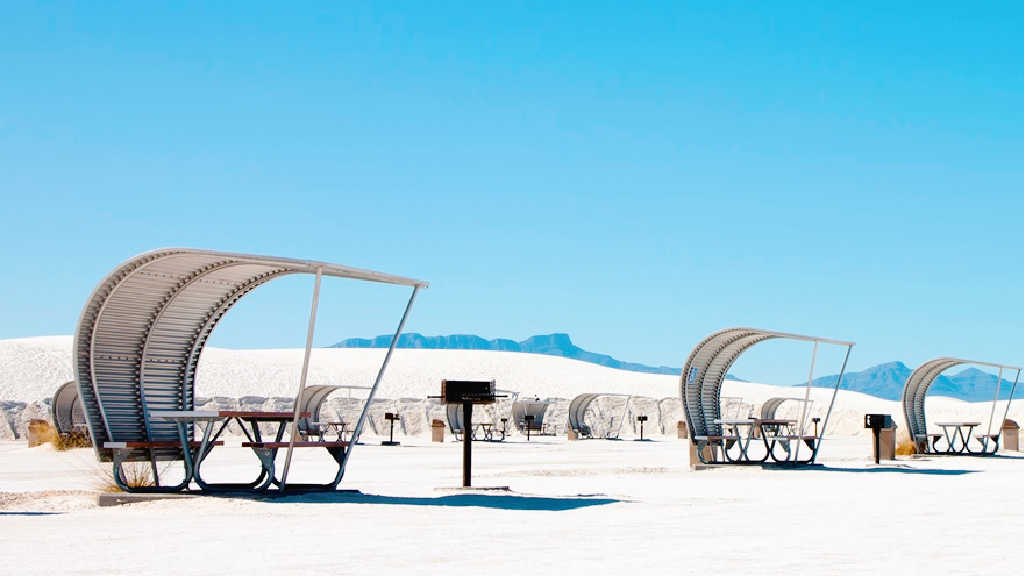
The park has five easily accessible walking trails, ranging in length from 0.4 miles to 5.0 miles. Each trail is associated with a specific color and symbol marker, excluding the Interdune Boardwalk.
At 0.5 miles, the Playa Trail is considered by many to be an easy 30-minute in-and-out walk. The trail leads to a playa, a low-lying area that fills briefly with rainwater. There are numerous exhibits to read along the way. This section of the park is mainly shrubs and does not have the beautiful white sands the park is famous for.
Dune Life Nature Trail (Blue Club)
The 1.0-mile Dune Life Nature Trail sits right across the street from the Playa Trail, and it provides visitors with the ability to climb dunes. This is one of the best trails to spot wildlife including reptiles, rodents, birds, badgers, and kit foxes. Plan on completing the loop walk in about one hour.
Interdune Boardwalk
The 0.4-mile Interdune Boardwalk trail takes place on an elevated platform. There are 10 exhibits to enjoy along the way. This is the only trail that is fully accessible for wheeled devices such as strollers and wheelchairs. Typically, it will take about 20 minutes to complete the in-and-out walk.
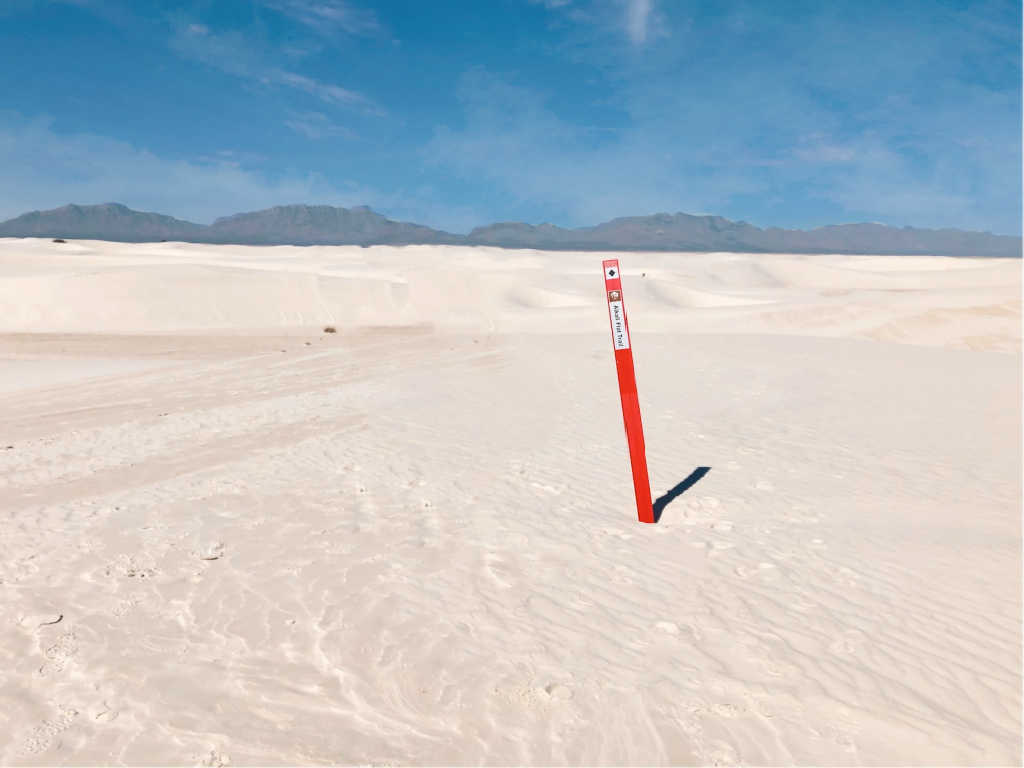
Backcountry Camping Trail (Orange Spade)
Don’t worry, you don’t have to be camping to complete this 2-mile loop hike. Highlights of the walk include the opportunity to cross over several dunes and view various vegetation. It will take about 1.5 hours to complete the walk.
Alkali Flat Trail (Red Diamond)
At 5 miles, the Alkali Flat Trail is the longest and most challenging in the park. It hugs the area where Lake Otero would have been. With rolling dunes, the trail goes through probably the most stunning area of the park. Plan on this walk taking about three hours to complete.
A bit of preparation will make both the Backcountry Camping and Alkali Flat trails more enjoyable. There’s no shade so bring a hat along with plenty of water. Also, wear above-the-ankle hiking boots to prevent sand from seeping into your shoe, or even consider walking barefoot.
5. It’s One of the Best Places For Photography in the US
There’s a reason that an estimated 90% of all US-produced motor vehicles are filmed and/or photographed in the West Filming Area of White Sands National Park—it’s that spectacular. There’s no other place on earth where you’ll find the dramatic contrast of a natural white landscape offset by perhaps a bright red vehicle.
The rolling dunes, dark shadows, and various hues brought on by the ever-changing sunlight make this a photographer’s paradise. And, the best part is, wonderful photos can even be taken with a simple smartphone. However, if you are planning on bringing expensive equipment make sure you have a plan on how you’ll protect it.
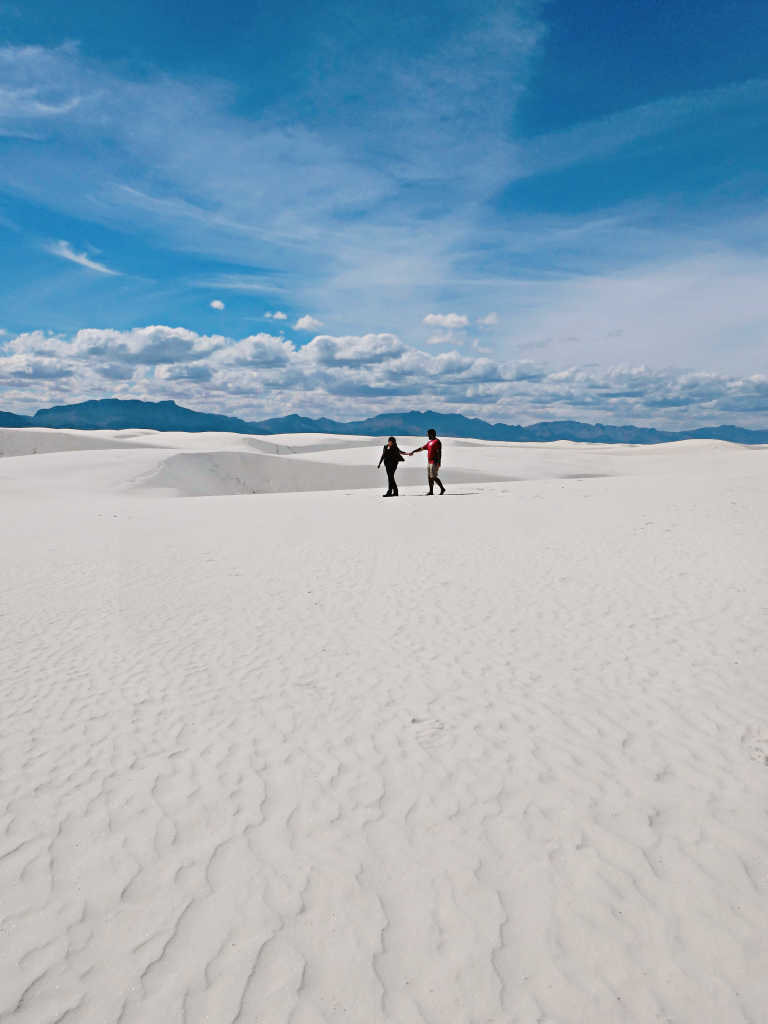
Sand can do irreversible damage to both the interior and exterior of a camera. In other words, it may not be worth pulling out your most expensive camera and/or lenses on a breezy day. Also, be sure to change your camera to a snow setting or increase the exposure to +1. If you don’t, your photos may come out a bit greyish.
Best Place to Take Photos in White Sands National Park
The best places to take photos are in the dunes behind the West Filming Area and along the Alkalia Foot Trail. We (and when I say we, I mean me) didn’t plan our outfits very well so our couple photos are a bit awkward. If you’re planning on doing any kind of couples photography, make sure your look is coordinated.
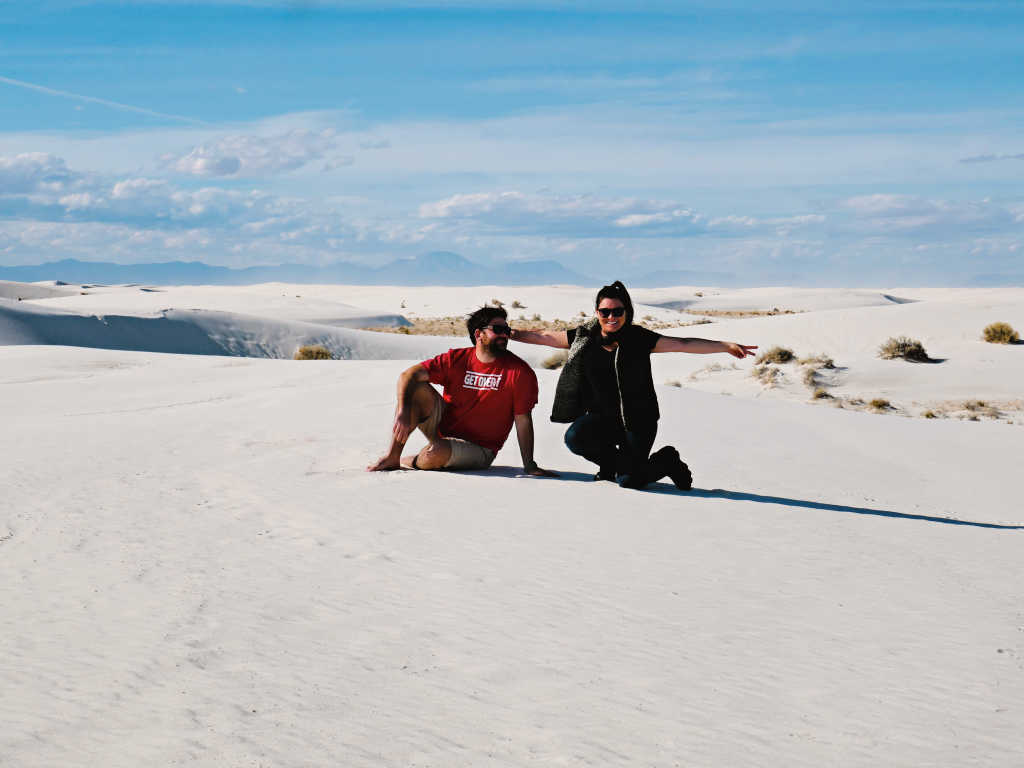
Also, Andy Defrancesco gives helpful advice; avoid areas with people, you don’t want their footprints (or bodies) in your shot. Experiment with taking photos at the top and the bottom of various dunes. Of course, the largest dunes are usually the most heavily trafficked and should most likely be avoided.
Look for areas closer to the bottom of the dunes where you’ll encounter yuccas and dune grasses. These areas will oftentimes add an interesting perspective to your photography. However, we found the best photos with individuals, that we took, were mainly the ones where we were just a spec on the horizon.
6. There’s a Section of the Park Along Route 70
Sometimes people hang out on the side of the highway, outside the fencing, to play in the soft sand. We believe this may be because they don’t want to pay the admission fee or because they’re short on time.
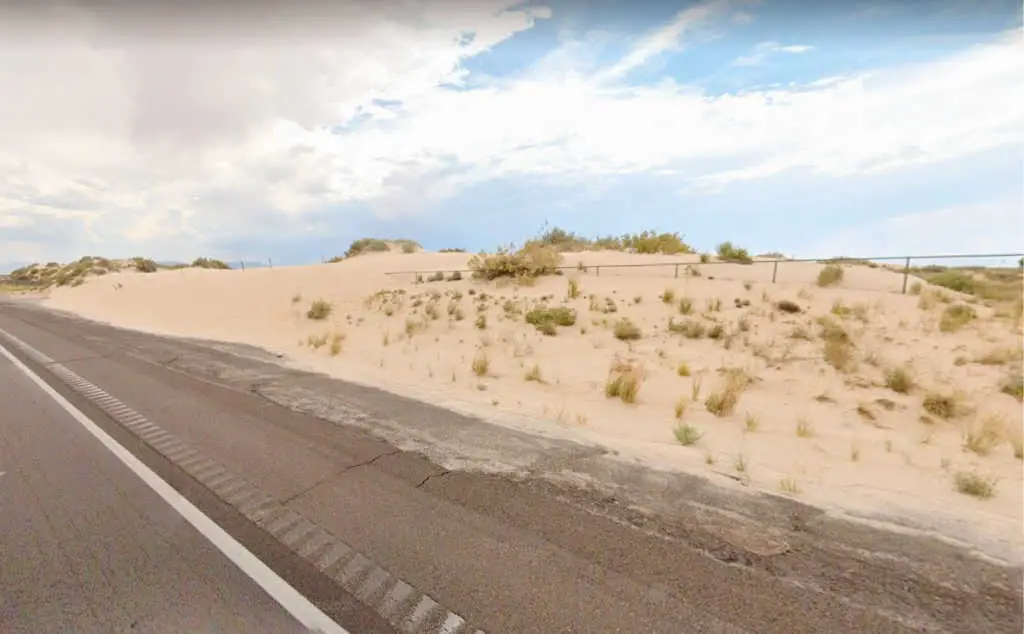
During our western road trip, we purchased the “America the Beautiful – National Parks & Federal Recreational Lands Annual Pass.” The pass provides access to more than 2,000 federal recreation sites. After determining that we wouldn’t be visiting any more parks for the rest of the year, we ended up selling them on eBay. Therefore, we recovered about 85 percent of the cost.
7. Items You Must Bring to White Sands National Park
What makes White Sands so much different than any other park is that there is no shade anywhere. As a result, the average visitor will benefit from bringing a few essential items. Moreover, the closest town is Alamogordo, a 20-minute drive away from the visitor center. Therefore, any items you forget at the store are, at a minimum, a 40-minute roundtrip drive away.
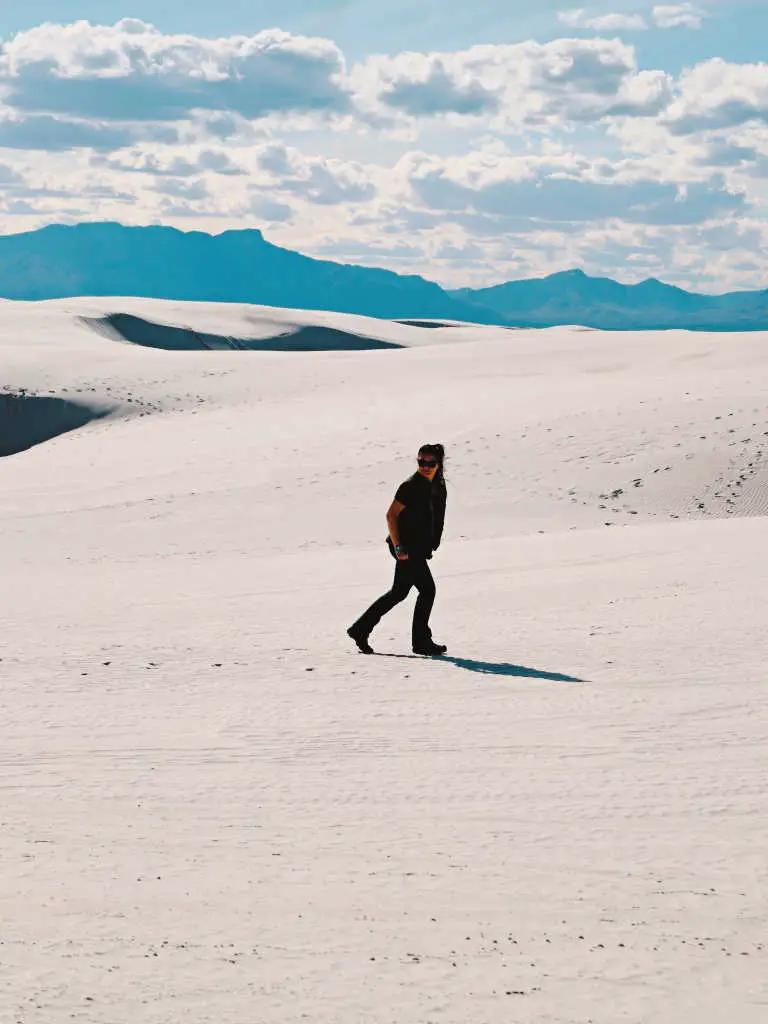
These items include sunglasses, water, a hat, loose light-colored clothing, salty snacks or sports drinks to replenish electrolytes, a fully charged cell phone, a steel saucer sled, and a camera. As a general rule of thumb, hikers should begin returning to their vehicles once their water is halfway gone.
White Sands National Park is like nowhere else on Earth that we’ve been to. The feeling of standing in polar snow while baking in the hot desert sun is a phenomenal experience. Simply put, it’s out of this world.
In the meantime, picture the San Andres Mountains looking down on the beauty of the desert, changing from reds and golds in the early morning to purples and blues near sunset. It’s hard to imagine any visitor to White Sands not leaving the park in a state of awe.
We Need Your Help
Did you find this article helpful? If so, bookmark it and when you’re planning your next vacation click on any of the links below before finalizing reservations. You’ll get the best price, we’ll earn a small commission, and you’ll help support future articles.
Thank you!
BEST TRAVEL SEARCH ENGINES
🏘️ Book Your Accommodation
We use Tripadvisor and Priceline’s Express Deals to compare prices and reviews in advance and check availability
✈️ Book Your Flight in Advance
To find the cheapest flight options, you can use WayAway and Skyscanner to find the most suitable choice for you
🚗 Reserve Your Rental Car
Use DiscoverCars and Skyscanner to compare prices and view the largest selection of vehicles

